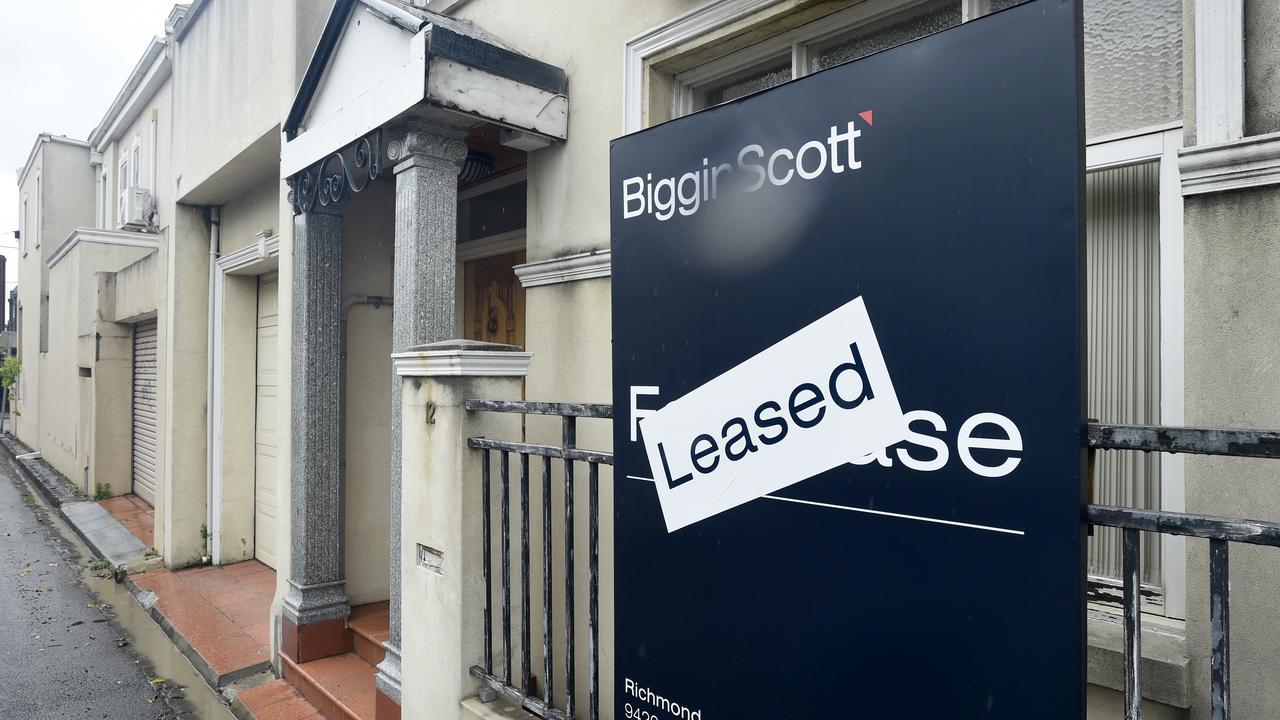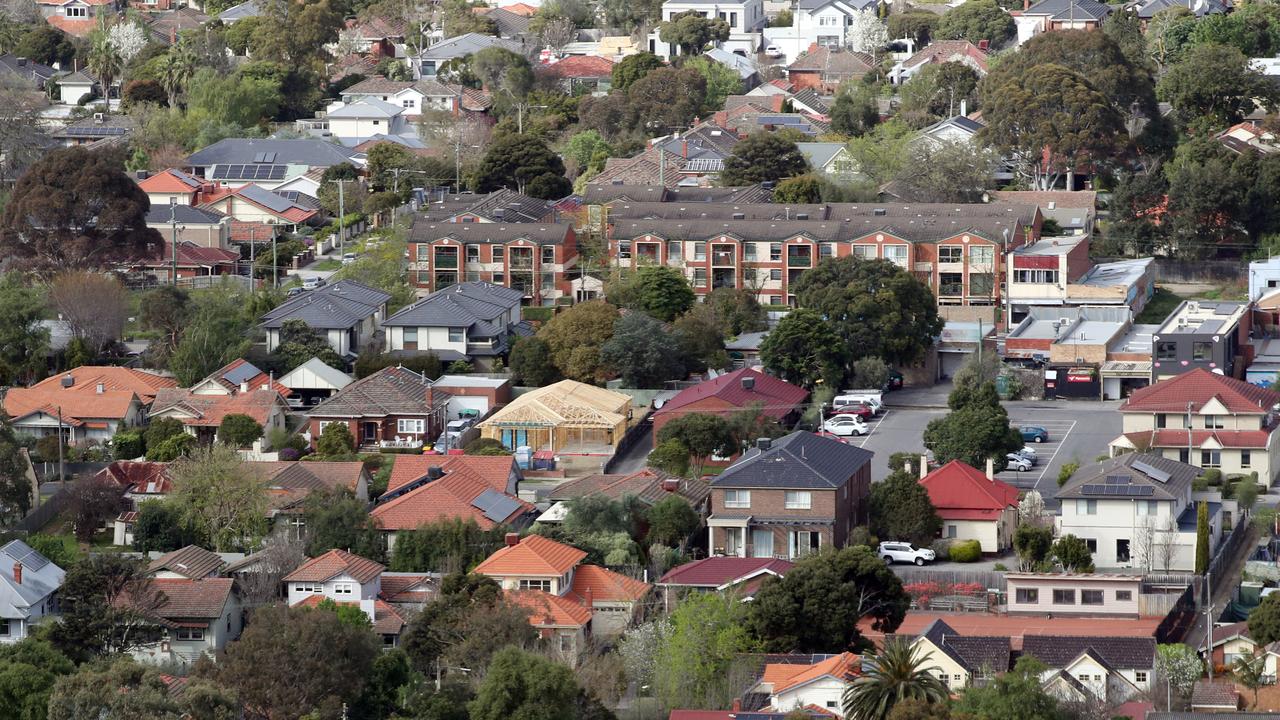Alarm bells sound as investors exit Tassie’s rental sector
One in four Hobart homes sold this summer were ex-rental properties, ramping up pressure on already stressed renters.
Property
Don't miss out on the headlines from Property. Followed categories will be added to My News.
HUNDREDS of landlords listed rental properties for sale in Tasmania in the first two months of this year in a further blow to already struggling tenants.
Exclusive research by SuburbTrends has also revealed the hotspots where the most investors are selling up, and where renters might soon be facing eviction — if they haven’t already been ordered out.
The data shows 550 ex-rental homes hit the market across the state from January to February this year, accounting for almost one in five (19.16 per cent) of total listings.
In 2023, this type of sale accounted for 15.27 per cent of total sales in Tasmania.
The state’s 3.89 percentage point change in just one year was the third largest in the nation, with only Victoria and the ACT recording larger upticks.
MORE: Revealed: 29 Tas suburbs where rents are now cheaper
‘Going hungry’: Rent rise forecast puts spotlight on city’s crisis

SuburbTrends founder Kent Lardner said any area with a 2 percentage point spike or more in ex-rentals being listed was “concerning”, as some landlords have buckled under the higher costs of holding their property.
“I think the alarm bell has started now,” Mr Lardner said.
“There’s always a natural number of people selling rentals. But the thing that is not normal is that significant spike.
“To see 19 per cent of Tassie listings being ex-rental homes is extraordinary. That 3.89 percentage point increase is huge.
“This figure supports the anecdotal evidence that we hear of landlords selling up and getting out.”
MORE: SOLD: Historic Salamanca home sets a high benchmark
Birchs Bay home is out of this world
In greater Hobart, the annual change was even more grim than the state results. Ex-rental property sales made up 19 per cent of total listings last summer and 25 per cent in 2024.
Every region grew, with Launceston and the North East moving from 16 per cent to 19 per cent; the South east from 7 per cent to 12 per cent; and the West and North West 12 per cent to 14 per cent.

Mr Lardner said there are many scenarios where landlords would exit property ownership — from those who are leaving the workforce for retirement, and it no longer makes sense to own a negatively geared rental home, to those who are feeling the pinch of rate rises and cost-of-living pressures, which would be “common for Mum and Dad investors”.
Real Estate Institute of Tasmania president Michael Walsh said it was “troubling times” for the state’s rental market and its decreasing investor participation.
“There is no doubt that the number of rental providers in Tasmania has shrunk,” he said.
“Traditionally, investor sales have equated to about 20-25 per cent of all sales. Over the past year, this has shrunk substantially to less than 12 per cent.
“In some quarters, it has been as low as 9 per cent.
“This has been a trend for many years.”

Mr Lardner’s research showed that some of Hobart’s largest suburbs recorded the highest number of ex-rental sale listings, led by 26 in Kingston, 23 in Sandy Bay and 22 in Glenorchy.
Northern suburbs Newstead and Devonport recorded 18 and 15 ex-rental listings, and double-digit listings were recorded in Claremont, South Hobart, Howrah and Blackmans Bay.
Mr Walsh said anything that further upset the rental market’s balance was something the Institute would not want to see happen.
“This includes rent freezes, modifications to a property without owner approval, or not being able to say no to pets,” he said.
“We have seen, in other states, that this type of change has had a massive detrimental effect on rental supply.”
Meanwhile, PropTrack’s new Rental Affordability Index has revealed that a typical Tasmanian median income household can only afford 20 per cent of rental listings when paying 25 per cent or less — just below the stress threshold — of their income for rent.
31 TAS SUBURBS WITH THE MOST EX-RENTALS
Suburb name, Landlord listings for sale Jan-Feb 2024
Kingston 26
Sandy Bay 23
Glenorchy 22
Newstead 18
Claremont 15
Devonport 15
South Hobart 12
Howrah 11
Blackmans Bay 10
Midway Point 9
New Town 9
North Hobart 9
Riverside 9
South Launceston 9
West Hobart 9
West Moonah 9
Launceston 8
Moonah 8
Lindisfarne 7
Mount Stuart 7
Berriedale 6
Invermay 6
Kings Meadows 6
Lenah Valley 6
Orford 6
West Launceston 6
Battery Point 5
Carlton 5
Old Beach 5
Smithton 5
Sorell 5
Source: SuburbTrends
More Coverage
Originally published as Alarm bells sound as investors exit Tassie’s rental sector








